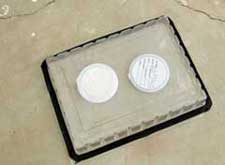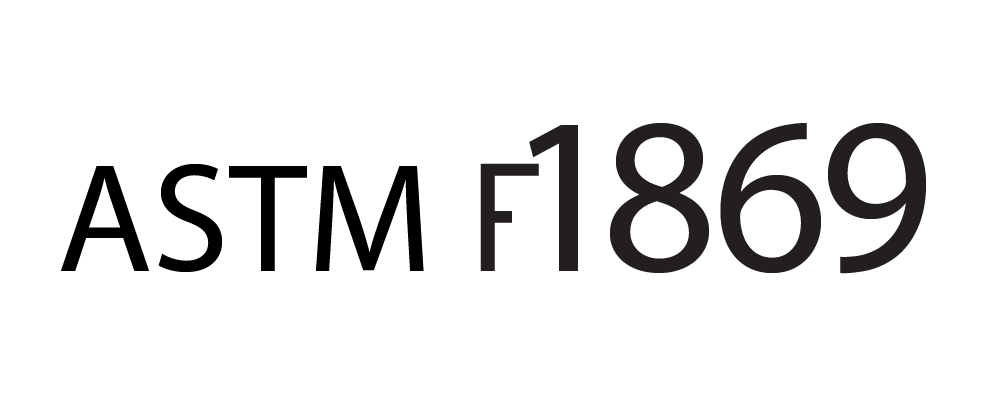The Workman’s History of Calcium Chloride Testing (F1869)
Concrete floor installers began using the calcium chloride (CaCl) moisture test back in the early 1940s to conclude when a new concrete slab was fit for floor coverings. Over decades, CaCl gained industry acceptance as a practical standard. Although builders continue to use the CaCl moisture test, post-installation moisture problems eventually redefined it as a test method worthy of scrutiny.
Moisture Vapor Emissions
Sub-Surface Emissions
Concrete moisture vapor migrates from the bottom of concrete slabs to their surfaces in order to evaporate. This is how concrete dries. Once poured, all concrete slabs require time for concrete moisture to reach equilibrium with the relative humidity (RH) of the slab’s surroundings. Generally, high ambient RH slows concrete drying as the slab absorbs moisture vapor; low ambient RH causes concrete to emit moisture vapor. Therefore, the natural migration process of concrete moisture drying is influenced by environment.
Where the challenge became clear was in determining whether the surface emission rate determined by desiccant weight gain truly reflected the moisture conditions deeper in the slab.
Qualitative Experience
If the quantitative assessment indicates moisture vapor emissions, building trades experienced decades of qualitative difficulties with the CaCl moisture test. In fact, moisture-plagued concrete slabs certified by ASTM F1869 protocol proved to be a patterned and persistent challenge to the concrete flooring industry – so much so that industry professionals began to investigate the scientific integrity of the CaCl moisture test.
Problem 1: surface measurement. CaCl measured only the top one-half to three-quarters inch of the slab.
Problem 2: distorted readings. CaCl tended to underestimate the true moisture conditions at the high end of the moisture spectrum, while it tended to overestimate the moisture conditions of older slabs. Builders, then, made threshold floor covering decisions based on errant readings.
Problem 3: scope of assessment. CaCl failed to methodologically account for the fact that concentrated concrete moisture resides at a greater depth than ever measured by the test. This led to continued moisture problems when that moisture eventually reached a covered concrete surface where they could no longer evaporate.
In light of such research, the American Society for Testing and Materials made two changes to moisture measurement industry standards. First, it amended ASTM F1869 to remove the CaCl moisture test as a means of measuring lightweight concrete moisture. Second, ASTM created F2170, a new standard that recognized in situ RH testing as an integral assessment method.
The CaCl moisture test is a building practice with lineage. It remains rooted in ASTM standard F1869 as the source of many tests tried. But their truth has entered a new era and the challenges of moisture emissions-based testing are becoming increasingly clear.


What’s the reading need to be for the concrete to be for carpet tile installation